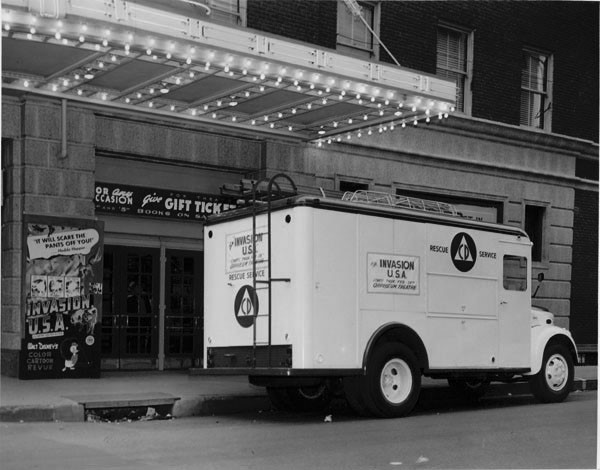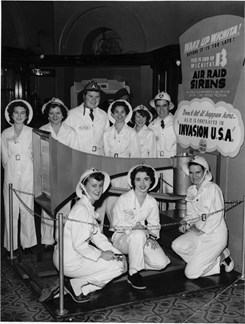History
Sedgwick County Emergency Management History

The evolution of modern-day Emergency Management has always been rooted in the idea of preparedness. Our roots began with the Wichita-Sedgwick County Civil Defense Department in the late 1940s. The Civil Defense Act of 1950 was signed into law by President Harry Truman which mandated things such as emergency plans, public fallout shelters, emergency control centers, sky spotters, neighborhood wardens, air raid sirens, supply caches and more. These mandated programs all still exist in some form today. We still have local emergency plans, emergency operation centers, sky spotters for storms, neighborhood CERT teams, outdoor warning sirens, and supply caches.
Over time our name changed from Civil Defense to Civil Preparedness. Once the threat of an attack on our homeland passed, our name was changed to Disaster Preparedness, then Disaster Management, before finally settling in with Emergency Management. Regardless of the name, our mission has always been the same, to prepare our community for our worst days and respond as a coordinating agency when the big one happens.
Our Outdoor Warning Siren History
Sedgwick County and Wichita respectively has always been synonymous with being "Tornado Alley" and while our history may indicate that. Our tornado sirens original intent was to warn of enemy air and atomic bomb attacks. Our outdoor warning system began with a single test siren on the roof of the Roosevelt School in April of 1952 and grew to 152 sirens spread throughout the county. More remarkably, Sedgwick County still owns and operates 4 of the original 13 sirens we installed in 1953. They represent the oldest serving civil defense era Thunderbolt sirens in the country.
Click Here for a Complete History of our Outdoor Warning System.
The Oldest Serving Thunderbolts in the Country.
Sedgwick County is a unique community in many ways, one way in particular is that we have the oldest serving Civil Defense Era Thunderbolt Sirens in the country. Four of the original sirens installed in 1953 were still on their poles actively serving in our system in 2022 before we took them down for refurbishment. When the Thunderbolts were produced, they were provided a serial number which began with T- 001, T-002, and so on. Sedgwick County possesses T-75, T-79, T-104, and T-116, all four of which were installed in April of 1953.
Defense Era Thunderbolt Sirens in the country. Four of the original sirens installed in 1953 were still on their poles actively serving in our system in 2022 before we took them down for refurbishment. When the Thunderbolts were produced, they were provided a serial number which began with T- 001, T-002, and so on. Sedgwick County possesses T-75, T-79, T-104, and T-116, all four of which were installed in April of 1953.
Manufactured by Federal Signal, the Thunderbolt was the siren of choice by many Civil Defense authorities and emergency management agencies from the early 1950s through the late 1980s. Since the Thunderbolt was introduced in 1952 during the beginning of Cold War, it saw primary use as an attack warning siren. Phases of the attack signal was stressed in advertising as one of the most distinguishing features of the Thunderbolt. The dramatic volume in the down-pitch phase of the signal is usually the part of the signal that carries the farthest and is the most "attention-getting."
Later years of the Thunderbolt's production saw a wide variety of different models made to suit a variety of functions as its popularity grew.
Check out the individual history for Thunderbolts here.
